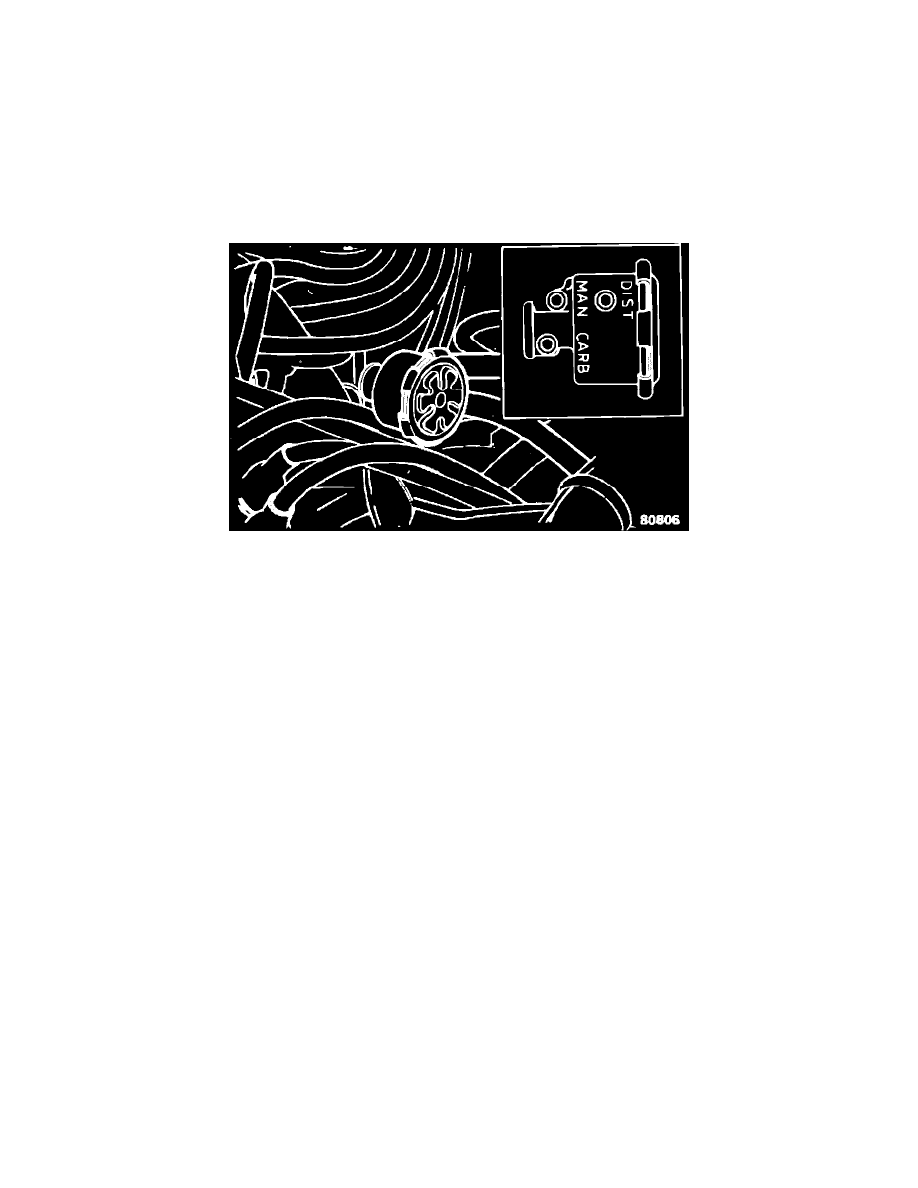Eagle Sedan L6-258 4.2L (1984)

Spark Control System: Description and Operation
SPARK COOLANT TEMPERATURE OVERRIDE (CTO) SYSTEM
On some models, vacuum spark advance operates on carburetor ported vacuum after engine has reached operating temperature. While engine is
warming up, driveability can be improved by operating the distributor vacuum spark advance with manifold vacuum while engine is cold. On 6 cyl.
models except Eagle, the CTO switch is located in the heater hose CTO fitting on models less A/C and in the heater valve on models with A/C. On Eagle
models, the CTO switch is located at the left rear of the cylinder block. A thermal sensor switch is in contact with the engine coolant. Depending on
engine coolant temperature, the CTO switch will permit either manifold vacuum or carburetor ported vacuum to be applied to the distributor vacuum
advance unit. On 6 cyl. engines, when coolant temperature is below 160° F on models except California or 165° F on California models, vacuum is
routed through switch port 1 to port D allowing manifold vacuum to be applied to the distributor vacuum unit. On 6 cyl. engines, when coolant reaches
the specified temperature, port 1 closes and port 2 is connected to port D applying carburetor ported vacuum to the distributor vacuum advance unit.
Fig. 34 Non-linear vacuum regulator valve
NON-LINEAR VACUUM REGULATION VALVE
The non-linear vacuum regulator (NLVR) Fig. 34, combines regulated vacuum at idle speed and carburetor ported vacuum to provide a regulated
output signal to control the ignition spark advance mechanism. It is mounted in series between the vacuum source port and distributor vacuum advance
unit. The NLVR has two input ports, intake manifold vacuum and carburetor ported vacuum, and one outlet port at the distributor advance unit. At curb
idle, the NLVR provides regulated vacuum. Under these conditions, manifold vacuum is high and ported vacuum is either very low or non-existent. The
NLVR, as determined by the calibration of the valve, provides a signal between the two vacuum levels. As engine load increases and the signal increases
above the regulation point (7.5 in Hg @ 75° F ±5), the regulator valve switches to ported vacuum output.
THERMAL VACUUM SPARK CONTROL DELAY VALVE
On some models, this valve is added to the air cleaner to control vacuum between the intake manifold source and the spark CTO switch. The purpose
of the valve is to allow the flow of controlled manifold vacuum when air passing through the air cleaner is below 55° F for 6 cyl. engines. At
temperatures above this level, manifold vacuum is prevented from reaching the spark CTO until coolant temperature reaches the spark CTO switch point.
